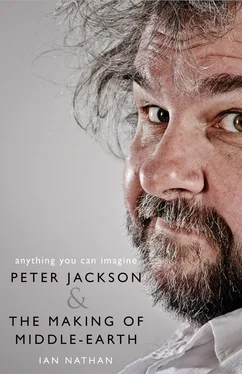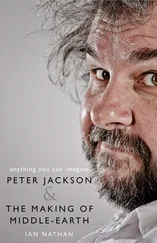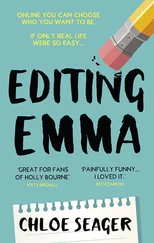Amid this renaissance of ape culture, the gorillas would cover the police patrols, the chimps were the artists, and, Jackson laughs, ‘I was going to have a big, fat orangutan with all the jowls as the Pope. It was a satirical look at religion.’ Everywhere the camera turned we would see statues of apes; then in one twist a statue gets knocked over and beneath the marble, which turns out to be plaster, we glimpse a human face.
‘It is all a façade!’ enthuses Jackson, the old excitement returning. ‘And we were actually going to have a half-human, half-ape character too that Roddy’s ape character had in hiding, because he would be killed if the ape society found out that there was this hybrid. It was quite interesting …’
Re-pitching his idea (for which, working on spec, he and Walsh had never earned a cent) to Fox’s new studio heads, Peter Chernin and Tom Rothman, he was informed the studio were also in talks with James Cameron to produce and Arnold Schwarzenegger to star.
‘We got an offer from Planet of the Apes , aggressive up front,’ says Kamins. ‘Not on the back end, because they couldn’t afford it because of Jim and Arnold.’
Jackson and Walsh had their qualms: this would be a big studio film and prey to big studio interference. Their natural independence, the very way they worked, would come under intense pressure.
Still the mind boggles a little at the notion: Peter Jackson directing Arnold Schwarzenegger in a Planet of the Apes movie produced by James Cameron, set in a crumbling ape Renaissance shot in New Zealand …
Jackson wouldn’t meet Cameron until 2005. Getting along straightaway, the Kiwi found himself wondering what might have happened if they had said yes. Tim Burton would eventually step into the project in 2001 for a tepid reverse-engineered spin on the original 1968 film with Mark Wahlberg; although the prosthetics masks, created by Rick Baker, were fabulous.
Many moons later, the legacy of the Apes would return to Jackson’s faraway kingdom. Following Weta’s industry-transforming breakthroughs not only with motion-capture but the filigree textures of digital fur through Gollum and then Kong, when Fox rolled the dice on the Apes saga once more with Rise of the Planet of the Apes in 2011, it was Weta who created the now stunningly lifelike digital simians, with Andy Serkis starring as the sentient chimp, Caesar.
*
Since the 1976 debacle, King Kong had remained in the keeping of Universal, the very studio where The Frighteners was about to be released sooner rather than later.
The plan had been to lean toward its horror credentials and release the undead comedy around Halloween in 1996. Despite Jackson’s best intentions to make a family film, The Frighteners had been landed with an adult R-rating (15 in the UK). In the meantime, however, Daylight was running late. Universal’s tunnel-bound Sylvester Stallone disaster movie, featuring a young Viggo Mortensen, had gone overschedule and was going to miss its 17 July release date.
Seizing the opportunity, Zemeckis called Jackson: ‘I want you to put together a short effects reel for me so I can take it into the studio.’ He intended to make a move to put The Frighteners into the more lucrative summer slot in place of the delayed Daylight .
When Weta’s visual effects proved to be on a par with ILM, Universal got excited and agreed to the July slot, and set about repositioning The Frighteners as a new visual effects extravaganza featuring Marty McFly!
Hollywood was becoming greatly intrigued. This wunderkind from over the ocean kept changing hats. First, he was the horror bandit, gorier even than Sam Raimi. Then he was the Weinsteins’ arthouse darling who brought such dark sensitivity to Heavenly Creatures . And now he was the new George Lucas, nurturing his own visual effects company.
‘So now the narrative’s starting to unfold very differently,’ says Kamins intently. Fox are making their overtures about Renaissance of the Planet of the Apes , The Frighteners is all of a sudden a summer movie and whispers of Jackson’s devotion to the great 1933 stop-motion marvel have reached Universal’s vice-president Lenny Kornburg. It was Kornburg who slyly tempted Jackson with his heart’s desire: ‘Would you have an interest in doing King Kong ?’
What a moment of infinite possibility this must have seemed. And it would prove too good to be true. Yet, for a few weeks, Jackson had in front of him the chance of adapting Tolkien’s beloved bestseller, reviving Charlton Heston’s dystopian talking ape thriller, or remaking the film that had, in many ways, charted the course for his life. Which would, in fact, count as his second attempt to remake King Kong .
A twelve-year-old Jackson had constructed the Empire State Building out of cardboard boxes and turned a bed sheet into a cyclorama of New York that featured the Chrysler Building, Hudson River and assorted bridges for an aborted version of the classic. He still has the jointed model of Kong built from wire, foam rubber and a fox stole his mother no longer wore (at least, she didn’t now). When he finally came to remake King Kong in 2005, Jackson flew out the original 1933 eighteen-inch armature of Kong designed by Willis O’Brien and sculptor Marcel Delgado, along with its collector Bob Burns, to set in an act of quasi-holy symbolism.
Jackson was fired up by the possibility of any remake of King Kong , but his own? Astonishingly, given the company she kept, Walsh had never seen the original. An oversight that was swiftly put to rights, and she was convinced enough for the talks to intensify with Universal.
While the projects circled like 747s awaiting permission to land, Jackson’s long-time lawyer Peter Nelson drew up a pro-forma contract that could apply to any one of them. Together Nelson, Kamins and Jackson were determined to set the terms of engagement. There were two significant stipulations. Firstly, that a ‘considerable sum’ be guaranteed by the studio for research and development into special effects. Secondly, that Jackson become a ‘first dollar gross participant’ meaning he would receive a percentage of the gross earnings of the film — not the net profit, which according to the elusive magic of studio accounting seldom seemed to materialize. He would also get final cut.
By autumn 1996, still undecided over which pathway smelled fairest, Jackson and Walsh took a holiday, driving around the South Island, taking in the stunning scenery that would so readily lend itself to Middle-earth. ‘We decided that during this trip we would figure out which film we were going to make,’ he says, and, essentially at this stage, it was a choice of two. Waiting for The Lord of the Rings to be ‘absolutely nailed’ by Harvey was too risky, too frustrating. Unless there was a radical breakthrough in the Middle-earth standoff, it was a case of which ape movie?
‘Both Fox and Universal were happy for us to jump into one of their films.’ And for Jackson it was the personal connection that finally told. ‘We decided to do Kong .’
First, though, he had to let Harvey know.
Making the connection across the thousands of miles that lay between New York and the South Island, Jackson got straight to the point. ‘Harvey, we are not going to wait any longer, we are doing Kong .’
Harvey went straight to force ten, the betrayed producer: ‘THIS IS NOT HAPPENING! I AM NOT HEARING THIS! YOU’RE NOT TELLING ME THIS! YOU ARE NOT TELLING ME THIS!’
It was Jackson’s first taste of the Miramax head’s notorious spleen. But he knew well enough the stories of screaming fits that had reduced both M. Night Shyamalan and Uma Thurman to public tears and narrowly missed causing a fistfight with Quentin Tarantino.
Читать дальше












